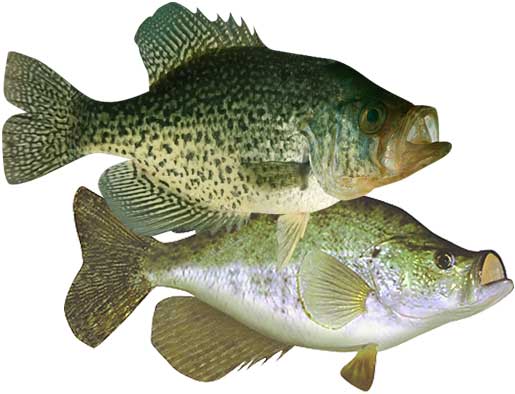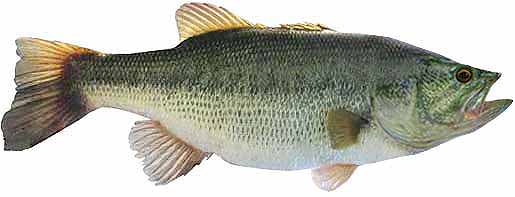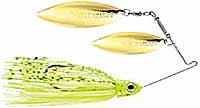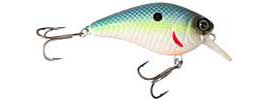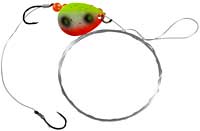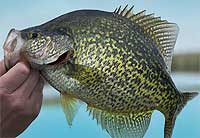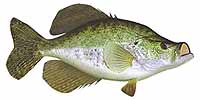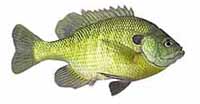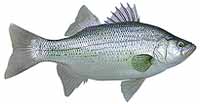Fishing Report For Smithville Lake, MO
By Rick Seaman
Last updated on .
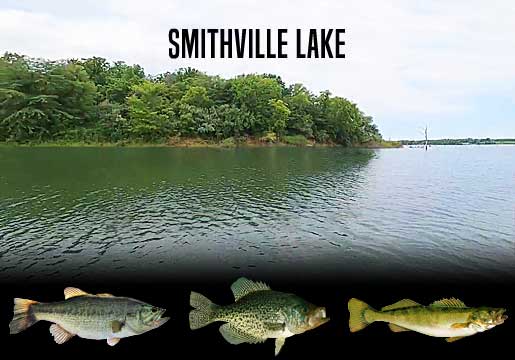
Fishing Reports
Popular Fish Species Smithville Lake, MO
Black & White Crappie
Current Report: Good
Crappie fishing continues to improve in Smithville Lake, for both black and white crappie. Virtually all the creek arms of the lake hold schools of crappie. Pockets from Sailboat Cove north, and pockets from the Collins Road Bridge east, are popular areas for crappie fishing.
FALL. Baitfish, which are moving into shallow flats, coves and bays, are drawing crappie into these areas. They are feeding heavily in preparation for the cold Winter, in 8 to 12 feet of water. Minnows, hair jigs, and crappie jigs, are good options during this feeding marathon. Late fall starts the migration deeper, toward winter holding areas, for both crappie and baitfish. Small flutter spoons, fished in 8 to 18 feet of water, are a good option during this transition. Good results are coming around points, creek channels, and brush piles.
WINTER. Once the shallows start cooling rapidly, crappie will migrate to deeper holding areas, mostly off shore. At this time they are typically caught using a very slow presentation, in 20 to 30 feet of water. Most are caught around deep brush piles, creek channel bends, submerged timber, and main-lake structure. If they are suspending in open water, they often relate to some cover, or structure change, directly below them. During warming trends, especially warm afternoons, they are drawn into 8 to 15 feet of water to feed. In late Winter, focus on tributaries that offer 18 to 25 feet of water along the main channel edges.
SPRING. In early Spring, crappie begin staging in 4 to 15 feet of water, just outside spawning bays and shallow flats. Spring is prime time to be on the water, as both black crappie and white crappie have moved shallow to spawn. At that time, they are typically caught in 2 to 8 feet of water. Vegetation, docks, brush and wood are where most anglers catch crappie using small crappie jigs or live minnows. After the spawn, crappie typically move outside the spawning area and hold on cover close by, in 12 to 20 feet of water. Once they move deep, anglers report success using fish finders and forward facing sonar to locate schools of crappie, which tend to stack vertically around cover. Light tackle, with 4 lb to 8 lb line, is a popular choice.
SUMMER. Water temperatures get quite warm, and crappie fishing is usually pretty good. They feed in 10 to 15 feet of water early and late in the day, until the hot Summer sun causes them to retreat to depths of 15 to 25 feet. Also, a few have embedded in the shade of slightly shallower vegetation. This is a good time to focus around brush piles, standing timber, deep lay downs and deeper docks. Anglers are also locating schools of crappie hanging over deep structure and around creek channel edges, using fish-finder electronics.
Largemouth Bass
Current Report: Fair To Good
Thanks to healthy populations of crappie and sunfish, largemouth bass grow at a fast pace in Smithville Lake. Bass can be found in all areas of the lake, from the dam the extreme ends of both arms of the lake.
FALL. Now that Fall has arrived, bass here have moved shallow, following schools of baitfish into coves and shallow bays around 6 to 15 feet of water. Currently topwater, jerkbaits, crankbaits, and slow-rolled spinnerbaits are catching most of the bass. Later in Fall, as deeper water cools, bait and bass move out to ledges, channel edges, points and humps where flutter spoons, jigs and drop shots are often good choices in 12 to 18 feet of water.
WINTER. Winter will isolate largemouth around slightly deeper structure, flats, points and creek channels. They can be found from 10 to 20 feet deep. Here they hold, feeding less frequently, awaiting warmer water to return in Spring. Slow presentations are key to getting bites. On warmer days, especially during late afternoons, bass may move into 6 to 15 feet of water to feed.
SPRING. Once water temperatures rise into the low 60's, largemouth will move from deep wintering holes, to shallower water nearby spawning areas. Vibrating jigs, jerkbaits and spinnerbaits typically get bites just away from the shoreline. At this time they are feeding aggressively in about 3 to 10 feet of water, and preparing for the spawn. Once water warms into the mid to high 60's, they will move into 2 to 4 feet of water, and create nests, then lay their eggs. Immediately afterwards, females move to deeper water and males remain to guard the eggs, and then the fry. After a couple weeks, the males also move to slightly deeper water. Deep-diving crankbaits, vibrating jigs, plastic worms and swimbaits are catching bass during this period.
SUMMER. Water temperatures will warm considerably in Summer. Bass will feed shallow, early and late in the day, where they will be caught in 8 to 15 feet of water, on crankbaits and spinnerbaits. Wacky-rigged stick worms always catch finicky bass when the bite is slow. Largemouth bass here feed on shad, herring, small sunfish and crawfish. During the hotter parts of the day, they are being caught on points, channel edges, and ledges 15 to 20 feet deep.
Walleye
Current Report: Fair
According to the Missouri Dept of Conservation's Annual Prospects Report, walleye fishing should continue to be quite good again this year. Nearly one-fourth of the walleye in the lake are over 20" long, so there is quality to be caught.
FALL. Fall brings cooler temperatures to shallow water, drawing walleye and baitfish shallower. Jigs, swimbaits, spoons, crankbaits, jerkbaits, and spinnerbaits are all historically good for catching walleye this time of year. Early Fall finds them in 10 to 20 feet of water. Later in Fall, they move out slightly deeper again. Dragging jigs or worm harnesses with nightcrawlers or leeches, or bottom bouncers, around ledge drop-offs catches walleye fairly consistently. Watch for the bigger walleye to be slightly deeper than the majority of the school.
WINTER. This Winter fishing for walleye was pretty good through the ice. Before, during and after the ice, anglers report catching them in 12 to 25 feet of water, along creek channel edges, rocky humps and ledges. They primarily feed on shad and small fish, staying close to the bottom. After ice-out blade baits, jigs, swimbaits, spoons, deep-diving crankbaits, and worm harness spinners, are all working while deep trolling or slow drifting.
SPRING. Early Spring brings warming water in the shallows, and draws walleye here to feed, especially rocky areas and inlet channels. In Spring work deep points, drop offs, submerged structure, rock ledges, deeper flats and edges adjacent to deeper water. Here, in 5 to 15 feet deep, they will spawn once the water warms to the mid to high 40's. When they move shallow, bright colored jigs, tipped with minnows or nightcrawlers typically catch them. Spinnerbaits, jerkbaits and crankbaits are also working when walleye are up shallow. Afterwards, they move to 15 to 20 feet deep around points, flats, shoals and ledges, nearby shore, often staying in close proximity to their spawning locations.
SUMMER. Water temperatures rise in Summer, and walleye fishing is good if you can get your bait deep enough. Early in the season, walleye tend to concentrate in 8 to 18 feet of water. Throughout Summer, early in the morning, and from dusk to long after dark are good times to catch walleye. At those times they move slightly shallower to feed in low-light conditions. Night fishing is often good in Summer, as well. The rest of the time they are cruising flats and creek channel edges, where they are harder to locate. Late Summer finds them 20 to 25 feet deep, preferring the cooler water temperatures. When the bite is slow, grubs and nightcrawlers, fished slowly, just off the bottom, catch walleye.
Fishing Video
Fish species to fish for...
Guide to fishing for largemouth bass, channel catfish, flathead catfish, black crappie, white crappie, walleye, bluegill, white bass and tiger muskie at Smithville Reservoir in Missouri.
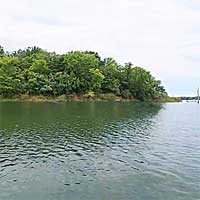 Smithville Lake is a 7,200 acre lake with 175 miles of shoreline offering excellent fishing. Crappie is the main attraction here, but you can also fish for bass, catfish, bluegill, tiger muskie, walleye and sunfish.
Smithville Lake is a 7,200 acre lake with 175 miles of shoreline offering excellent fishing. Crappie is the main attraction here, but you can also fish for bass, catfish, bluegill, tiger muskie, walleye and sunfish.
Primary fish species to catch
Click images for fishing tips and details about each species.
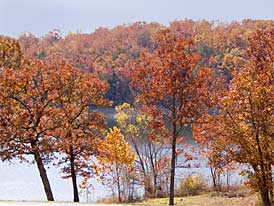
Today's Weather & Forecast
Fishing Boat Rentals
Click here for fishing boat rentals.
Public Boat Launch Ramps & Landings
Click here for boat ramps.
Click here for marinas.
Fishing License
Click here for a Missouri Fishing License.
Map - Fishing & Access
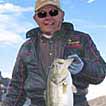 Rick Seaman is a fishing enthusiast with over five decades of fishing experience, a retired tournament fisherman, author of numerous published articles on fishing, and co-author of the book "Bass Fishing - It's not WHAT you throw, It's WHERE you throw it".
Rick Seaman is a fishing enthusiast with over five decades of fishing experience, a retired tournament fisherman, author of numerous published articles on fishing, and co-author of the book "Bass Fishing - It's not WHAT you throw, It's WHERE you throw it".
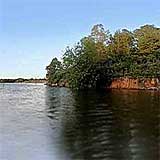 Contact Information
Contact Information
Smithville Lake
17201 Paradesian St
Smithville, MO 64089
816 407-3600
Fishing lakes in each state
102125
Smithville Lake, Missouri Report
MISSOURI


Information about fishing lakes in MO.
Smithville Lake offers awesome crappie fishing plus decent tiger muskie, walleye and bass fishing.


